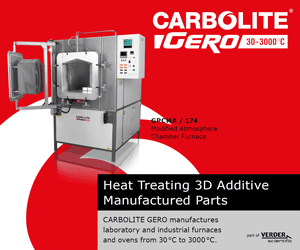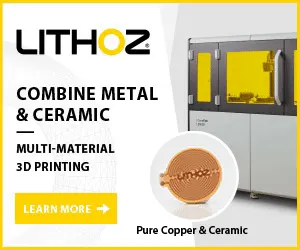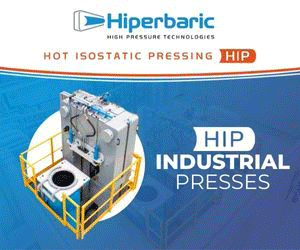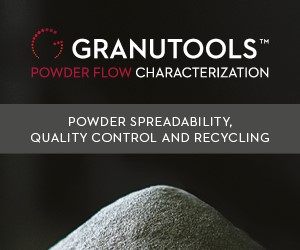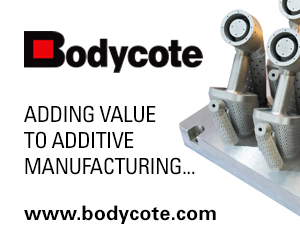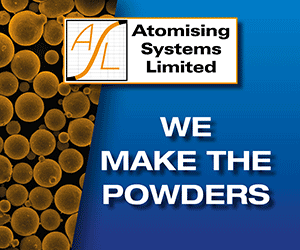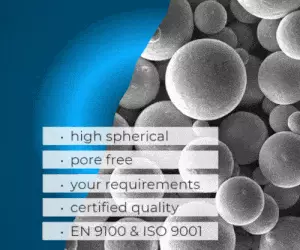Metal Additive Manufacturing, Vol. 6 No. 3 Autumn 2020
Prefer a PDF download? Click here
In addition to the latest industry news, this 216-page issue of Metal Additive Manufacturing magazine includes the following exclusive features:
Atherton Bikes: The journey from world title success to mastering Additive Manufacturing for performance bike production
The story of Atherton Bikes stands out as a shining example of how metal Additive Manufacturing (AM) can be successfully embraced and commercialised by a small, dedicated team of people.
In the case of the Atherton family, the technology has not only enabled them to maximise their performance at the pinnacle of professional mountain biking, but has also opened a path to commercial bike production in an industry where frame manufacturing is dominated by Taiwan and China.
In an article that will appeal to anyone considering the use of metal AM, the Atherton Bikes team shares its experiences with Robin Weston.
View online | Download single page PDF | Download double page PDF
Advancing rocket propulsion through Additive Manufacturing, novel surface finishing technologies and public-private partnerships
Whilst Additive Manufacturing is undoubtedly having a huge impact on the design and manufacture of rocket propulsion systems, most notably combustion chambers and nozzles, the Achilles’ heel of most AM processes is as-built surface finish.
Whilst in many AM applications surface finish may be largely irrelevant to a component’s function or performance, when it comes to high-cycle fatigue properties, achieving the required level of smoothness is critical to performance.
In this article, Justin Michaud, REM Surface Engineering, reports on advancements achieved in this area through a public-private partnership with NASA.
View online | Download single page PDF | Download double page PDF
From aerospace engineering to AM: Melanie Lang on FormAlloy and the future of Directed Energy Deposition (DED)
When you mix a childhood obsession with rockets and space travel, a career at some of the biggest global names in aerospace, and a curiosity about hobbyist 3D printing developed through maker fairs, it was inevitable that FormAlloy’s Melanie Lang would end up in the world of metal Additive Manufacturing.
Metal AM magazine’s Emily-Jo Hopson-VandenBos interviewed Lang, CEO and co-founder of Directed Energy Deposition (DED) specialist FormAlloy, about her route into AM, her company’s technology and the outlook for the process.
View online | Download single page PDF | Download double page PDF
Additive Manufacturing of hardmetals: An evaluation of potential processes for tool production
Hardmetals, also known as cemented carbides, have played a huge and often overlooked role in modern industrial development. From the first application in wire drawing dies in the 1920s, hardmetals are today universal and their application areas range from metal cutting and the machining of wood, plastics and composites to the production of glass bottles, aluminium cans and the ubiquitous ball-point pen tip. Can Additive Manufacturing make inroads into a market worth tens of billions of Euros in annual sales?
Dr.-Ing. Johannes Pötschke reviews the fundamentals of hardmetal production and considers the most viable AM processes for this complex family of materials.
View online | Download single page PDF | Download double page PDF
High-performance nickel-base alloys for Additive Manufacturing: A review of their limitations and potential
Nickel-base superalloys are an important material group for components used in the gas turbine, aerospace and chemical processing industries. Many of the well-established superalloys available today do not, however, adapt well to processing by Additive Manufacturing.
In this article, Dr Tatiana Hentrich and Dr Christina Schmidt, VDM Metals International GmbH, present an overview of nickel-base alloys with a focus on strengthening effects, mechanical properties and weldability, comparing production challenges by conventional production routes and Laser Beam Powder Bed Fusion (PBF-LB) Additive Manufacturing.
View online | Download single page PDF | Download double page PDF
Metal Additive Manufacturing in New Zealand: An overview of research, commercial activities and strategic initiatives
For a country with a total population significantly smaller than that of cities such as London or New York, New Zealand is ‘punching above its weight’ when it comes to developing expertise in Additive Manufacturing and educating design engineers in how to use it.
Olaf Diegel, a professor at New Zealand’s University of Auckland and associate consultant at Wohlers Associates, and Terry Wohlers, president of Wohlers Associates, report on AM activities and highlight a novel range of successful commercial applications.
View online | Download single page PDF | Download double page PDF
Hybrid inserts for mould and die production: How workflow optimisation can help make the business case for AM
The use of metal Additive Manufacturing for the production of injection moulding tools that have been optimised by conformal cooling is growing internationally. For many companies, however, the main obstacles to adoption are not concerns about material properties or apprehension about unfamiliar processes, but simply initial cost – the tooling industry is extremely competitive and AM inserts can be expensive.
Here, 3D Systems’ Mark Cook and GF Machining Solutions’ Dogan Basic present a case study from leading toolmaker and injection moulding specialist TK Mold that highlights how such inserts, when efficiently manufactured, can reduce overall manufacturing costs and improve part quality.
View online | Download single page PDF | Download double page PDF
Neighborhood 91: The bridge to Additive Manufacturing production
Whilst Additive Manufacturing as a technology is proving its worth through an ever-growing list of innovative, real-world applications, the obstacles faced by players in the current AM supply chain are numerous, ranging from skills shortages to a highly-complex supply chain, high costs and fluctuating product demand.
To address this, Neighborhood 91, an end-to-end AM production campus, is being created in the US city of Pittsburgh that, as Laura Ely and John Barnes report, seeks to condense and connect all components of the Additive Manufacturing supply chain into one powerful production ecosystem.
View online | Download single page PDF | Download double page PDF






